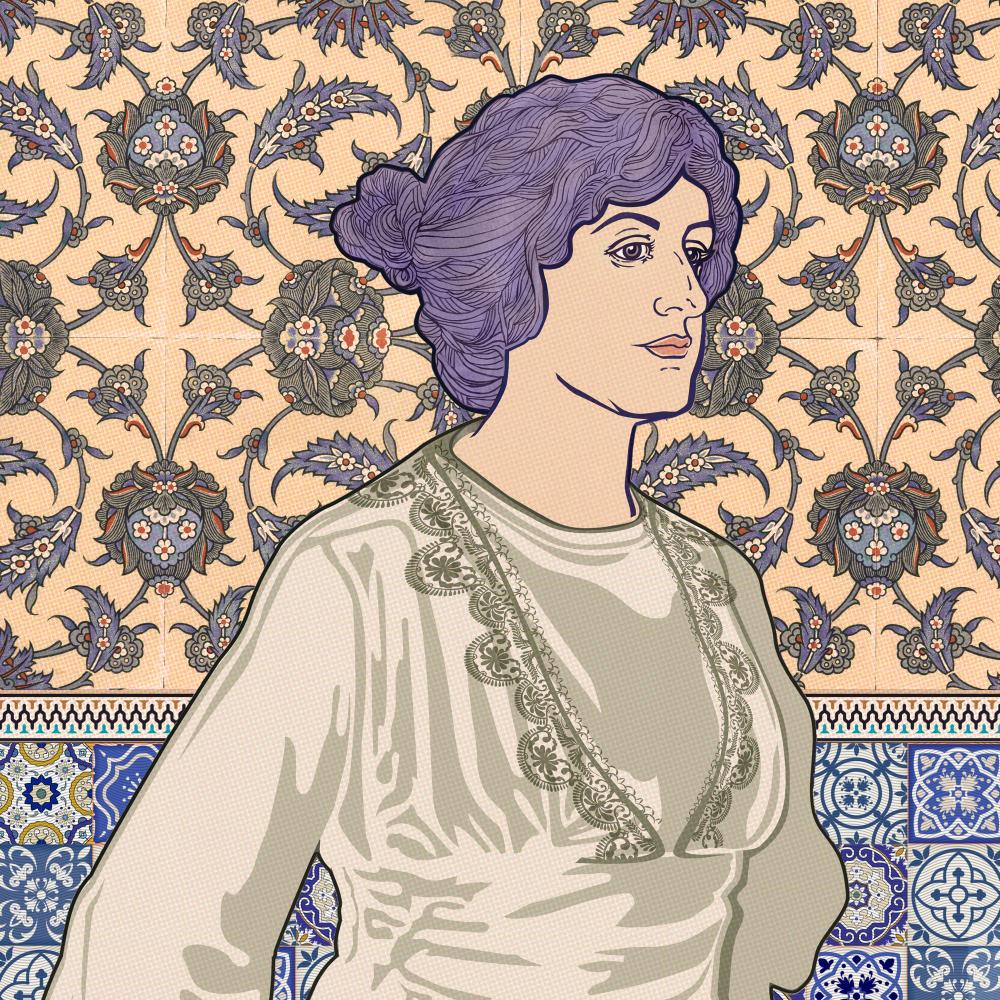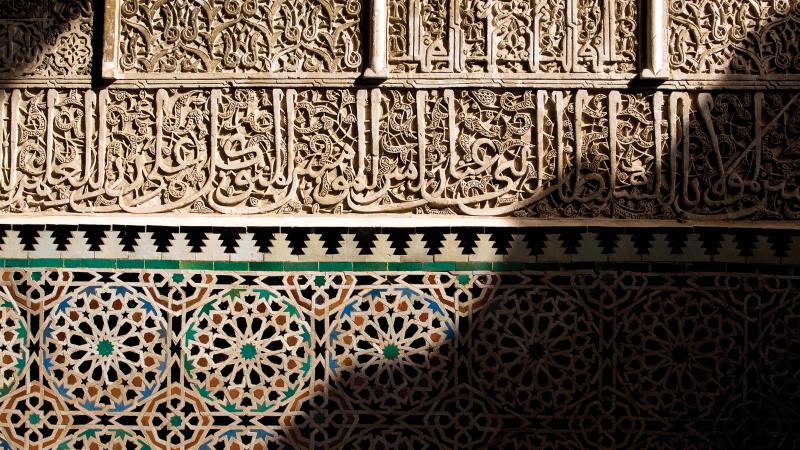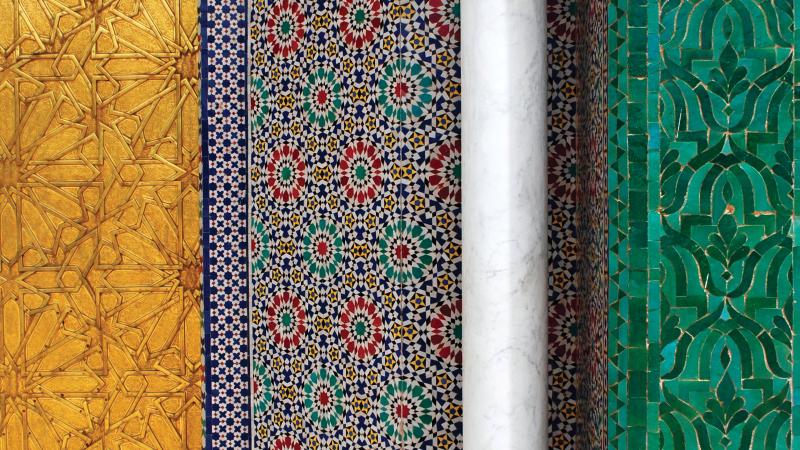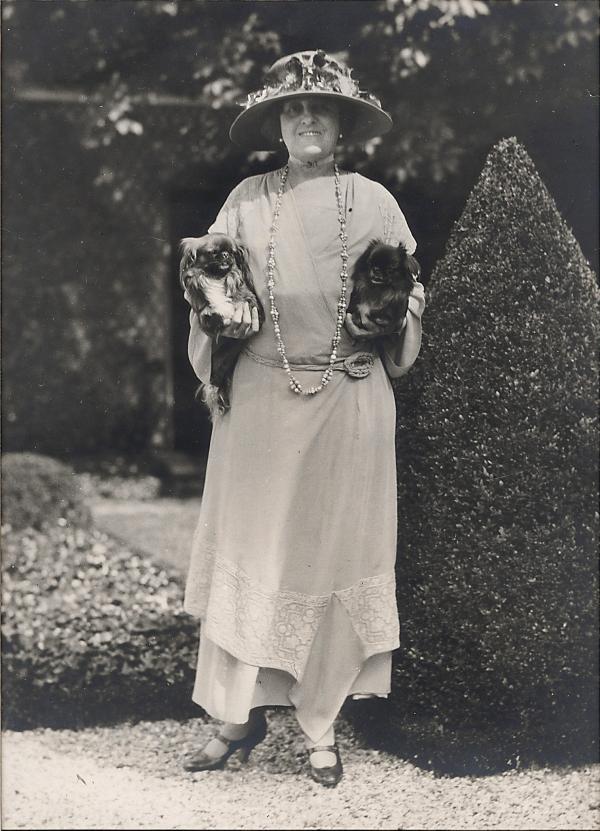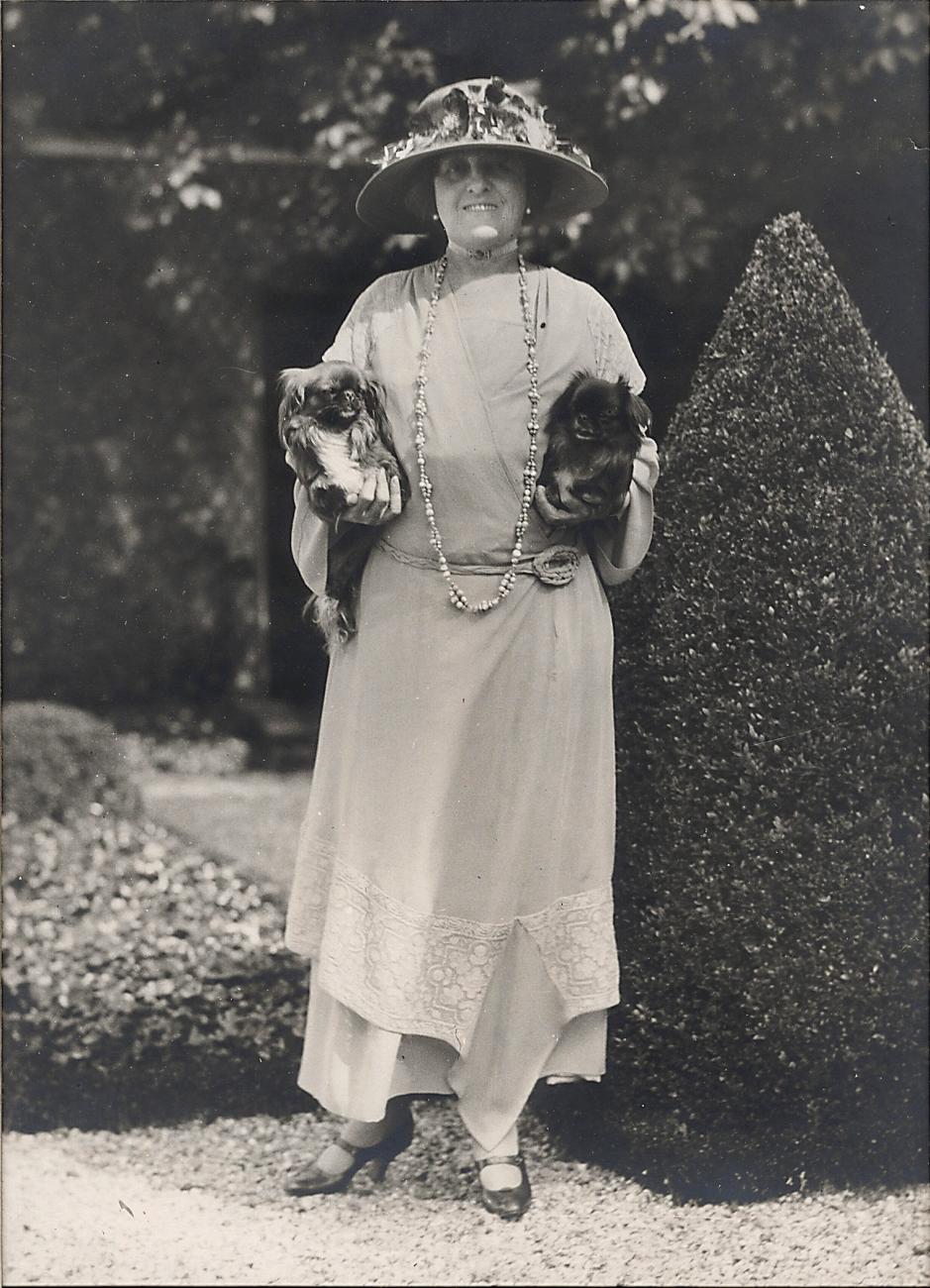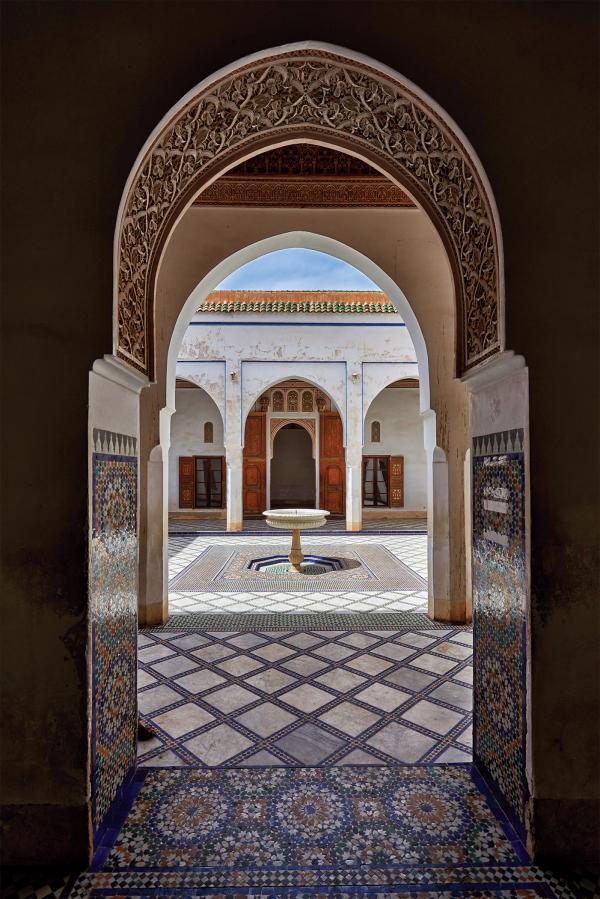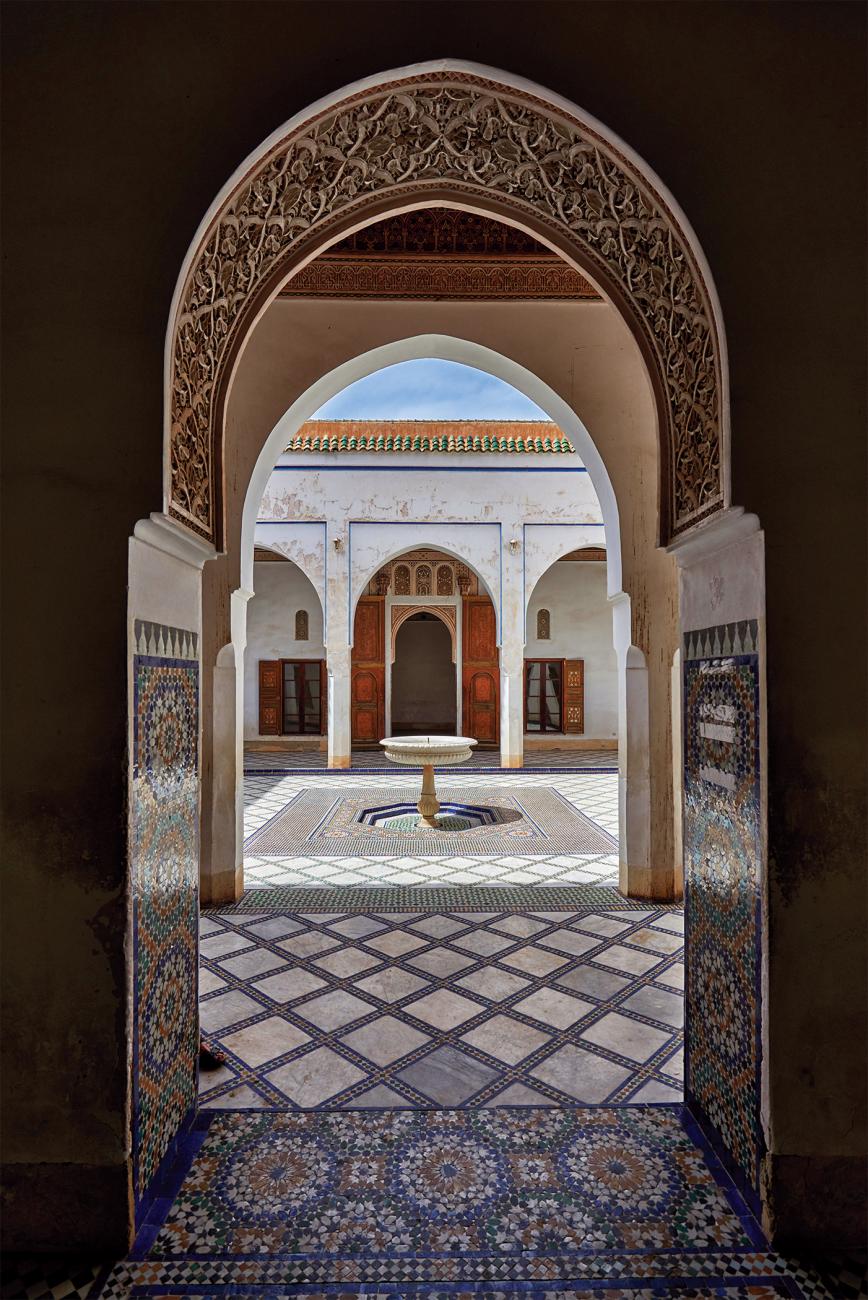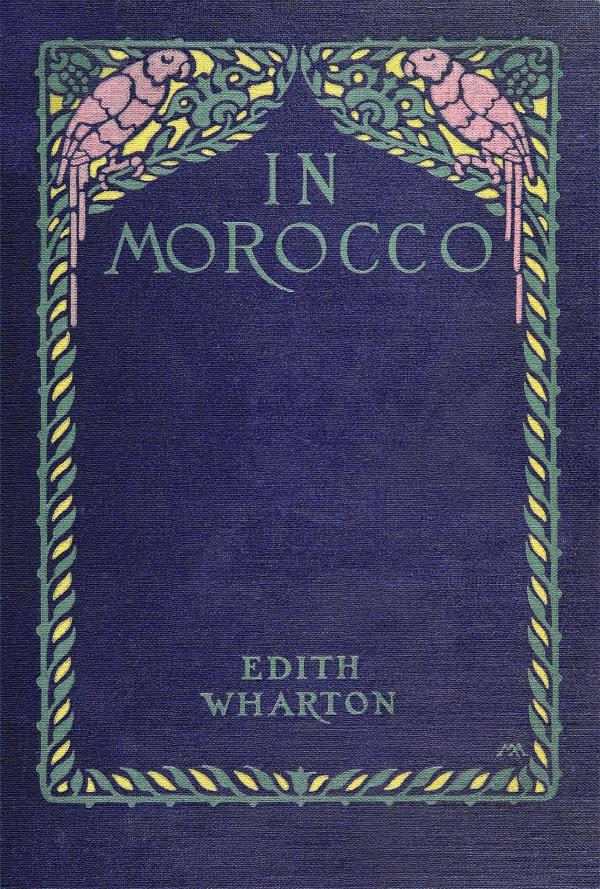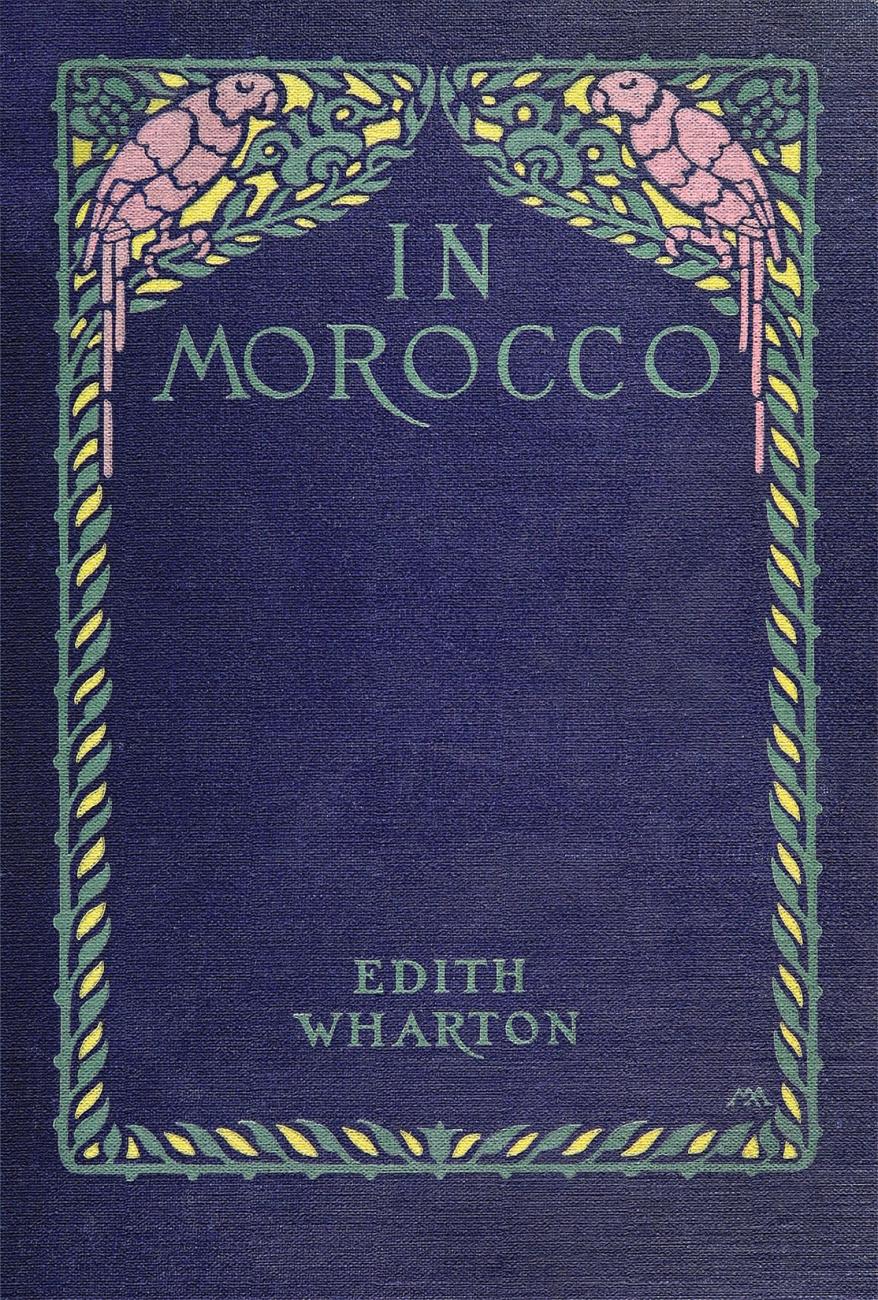Edith Wharton was living as an expatriate in Paris when World War I descended on France. Rather than take a steamship home like so many other Americans, she stayed put, opting to endure the war in the country that had heretofore provided her with sanctuary and solace.
Wharton continued to write, churning out stories, a novel, and even reporting from the front lines, but she also threw herself into helping the thousands of refugees who flooded Paris. She oversaw sewing rooms and organized housing. She opened a tuberculosis hospital and raised money for relief. For her tour de force of charity, the French government awarded her its highest honor, the Chevalier of the Legion of Honor.
All that writing and relief work took a toll, however, and she needed a break. In the summer of 1917, she leapt at an unexpected opportunity to visit French Morocco, France’s fledgling colony in North Africa. In need of income, she convinced Scribner’s, her publisher, to let her write about the trip.
The result was In Morocco, part travelog, part exploration of the lives of Moroccan women, and part procolonial tract. Packed with gorgeous visual writing, this odd little book showed Wharton at the height of her descriptive powers and at her socially most observant. It helped shape American and British views of Morocco as an exotic travel destination, but it also seems to have nurtured Wharton’s mature masterpiece, The Age of Innocence. Like that great novel of manners, In Morocco was inspired by the pageantry of a society and its most stifling customs.
How exactly did Wharton end up in French Morocco during World War I? She received an invitation to visit the annual arts and crafts fair held by the French Protectorate of Morocco. Her host was Hubert Lyautey, the resident-general of French Morocco, whom she had met in Paris and found captivating. Lyautey, a French version of Lawrence of Arabia, was a decorated soldier who spoke Arabic and respected Moroccan culture. He was also a keen promoter of his own efforts to open up French Morocco.
In the five years since France had established the French Protectorate, Lyautey had embarked on an ambitious program to remake the country’s infrastructure. Thousands of miles of railway lines and roads were being laid to connect Morocco internally and with the outside world. A new port at Casablanca would welcome commercial and tourist ships. Old buildings were restored, as new European-style buildings rose outside the ancient medinas. What better way to share this new emerging French Morocco than to invite Wharton, a world famous novelist, to visit and write about her experiences?
An avid traveler, Wharton couldn’t resist the lure of seeing Morocco for herself. She had spent decades traveling throughout Europe. In the summer of 1914, she had visited Algeria and Tunisia, adding French North Africa to her passport. Travel was a balm for her inquisitive mind, and Lyautey’s invitation gave her a chance to see Morocco before the organized tours and hordes of tourists clutching guidebooks began showing up.
She left Paris in late September 1917. Along with her traveling companion, Walter Berry, a dear friend of many years, she drove southwest through France, over the Pyrenees, and into Spain. At Algeciras, they made the short trip across the Mediterranean to arrive at Tangier, the international city, perched above the Straits of Gibraltar, that served as a crossroads of Africa and Europe. From Tangier, they headed south through Spanish Morocco and into French Morocco.
Setting the stage for her readers, Wharton emphasizedthat her subject was a place few Westerners had visited:
There is no guide-book to Morocco, and no way of knowing, once one has left Tangier behind, where the long trail over the Rif is going to land one, in the sense understood by any one accustomed to European certainties. The air of the unforeseen blows on one from the roadless passes of the Atlas.
This feeling of adventure is heightened by the contrast between Tangier—cosmopolitan, frowsy, familiar Tangier, that every tourist has visited for the last forty years—and the vast unknown just beyond.
As soon as Wharton and Berry entered French Morocco, however, things went awry. After all, it’s not a travel narrative if you’re not at some point stranded beside the road.
The chauffeur provided by Lyautey lost his way, and they couldn’t ask for directions because they didn’t speak Arabic. Then the car wouldn’t start. All this occurred at the sun’s zenith, which only added to their misery. Wharton was too delicate to say it, but one can imagine the multiple layers of clothing demanded by Edwardian fashion and the profuse sweating that followed.
In Wharton’s telling, however, their predicament becomes a thing of beauty. “The heat is mortal at the moment. For the last hour the red breath of the sirocco has risen from every hollow into which we dipped, now it hangs about us in the open, as if we had caught it in our wheels and it had to pause above us when we paused.”
Writing three years later, the trepidation that Wharton felt still came through. “But let one little cog slip and the whole plan falls to bits, and we are alone in the old untamed Moghreb, as remote from Europe as any medieval adventurer. If one loses one’s way in Morocco, civilization vanishes as though it were a magic carpet rolled up by a Djinn.”
The contrast between the untamed Morocco and the civilized Europe appears repeatedly throughout the book. Wharton writes of Crusaders, Barbary pirates, Norman knights, and Hansa merchants, while making nods to the fantastical elements of Arabian Nights. She uses these images to illustrate for the reader how different Morocco is from their quiet suburban lane or crowded streetcar. Wharton paints it as a country lodged in the past, whose mysteries still need to be deciphered.
The comparisons also reflect Wharton’s background and politics. A child of old New York and a member of the American upper class, she counted among her friends Teddy Roosevelt, one of the fiercest advocates of American imperialism. William Morton Fullerton, a newspaperman with whom she carried on a torrid affair, articulated a new version of the Monroe Doctrine in The Problems of Power (1913). And then there’s Wharton’s own words. In a letter to a friend, she calls herself “a rabid Imperialist.”
Wharton’s support for colonialism extended to the European powers, and to France’s control of Morocco. Even before she set foot in French Morocco, her reading shaped her view of its history and France’s role in its future. Wharton always studied before traveling to a new destination, reading up on its history and culture. She’s the woman with her nose in Baedeker, longing to know the significance of what she is seeing. But many of the histories and travelogs she read (which are listed in the book’s bibliography) were procolonial tracts, including those by Augustin Bernard, Pierre Loti, Le Marquis de Segonzac, and André Chevrillon. They posited a vision of Morocco as an exotic land in need of French conquest.
It’s not clear how the travelers finally get back on the road, but Wharton picks up the story as they approach Salé, “the fierce old pirate town, where Robinson Crusoe was so long a slave.” The city sits across the Bou-Regreg River from Rabat, which the French chose as the capital of French Morocco after they decided Fès (Fez), long the seat of sultans, posed too many security risks. The contrast between the two towns gives rise to one of the most frequently quoted passages in the book: “Salé the white and Rabat the red frown at each other over the foaming bar of the Bou-Regreg, each walled, terraced, minareted, and presenting a singularly complete picture of the two types of Moroccan town, the snowy and the tawny.”
Leaving Rabat on the coast, Wharton’s party headed to the interior of Morocco, venturing where only the hardiest European tourists dared go. Along with providing a driver, Lyautey made sure that helpful officials and invitations awaited her at each stop. At Volubilis, “we saw the sight which, at whatever end of the world one comes upon it, wakes the same sense of awe: the ruin of a Roman city.” From there, they traveled on to Moulay Idriss, a town long closed off to westerners that had only recently admitted the French.
The streets were curiously empty when Wharton and company arrived. Following the sound of drums and men’s voices, they were led to the main marketplace, which was bursting with the inhabitants of the city. “The late sunlight lay like gold-leaf on one side of the square, the other was in pure blue shade; and above it, the crowded roofs, terraces and balconies packed with women in bright dresses looked like a flower-field on the edge of a marble quarry.” The crowd was there to honor Hamadchas, a seventeenth-century saint so beloved by his slave that the slave committed suicide upon his master’s death.
At one end of the square, musicians played on a platform overlooking the dancers.
In its centre an inspired-looking creature whirled about on his axis, the black ringlets standing out in snaky spirals from his haggard head, his cheek-muscles convulsively twitching. Around him, but a long way off, the dancers rocked and circled with long raucous cries dominated by the sobbing booming music, and in the sunlit space between dancers and holy man, two or three impish children bobbed about with fixed eyes and a grimace of comic frenzy, solemnly parodying his contortions.
As Wharton watched the dancers, she noticed the sun catching flashes of red on the bodies and the ground. At first she thought it was paint, only to realize it was blood fromthe dancers pounding their bodies with stones and hatchets. “The dance was a blood-rite, a great sacrificial symbol, in which blood flowed so freely that all the rocking feet were splashed with it,” she wrote.
In Fès, the ancient walled medieval city in the desert, Wharton’s party rode mules to navigate its streets and bazaars. Later describing the crowds they waded through, she made conspicuous use of her talent for setting a scene:
Then the populace closes in again, so quickly and densely that it seems impossible it could ever have been parted, and negro water-carriers, muffled women, beggars streaming with sores, sinewy and greasy ‘saints,’ Soudanese sorcerers hung with amulets made of sardine-boxes and hares’-feet, long-lashed boys of the Chleuh in clean embroidered caftans, Jews in black robes and skull-caps, university students carrying their prayer-carpets, bangled and spangled black women, scrofulous children with gazelle eyes and mangy skulls, and blind men tapping along with linked arms and howling out verses of the Koran, surge together in a mass drawn by irresistible suction to the point where the bazaars converge about the mosques of Moulay Idriss and El Kairouiyin.
From Fès, they made the desolate journey to Marrakech, which had not yet become a tourist magnet and progenitor of hashish dreams. “The road traverses no villages, and not even a ring of nomad tents is visible in the distance on the wide stretches of arable land.” Finally, glimpses of violet appeared far ahead, as the Atlas Mountains beckoned. “Mysteriously, from the heart of the palms, a tower shot up, as if alone in the wilderness, behind it stood the sun-streaked cliffs of the Atlas, with snow summits appearing and vanishing through the storm.” In Marrakech, she stayed at the palace of Bahia, which had been claimed by Lyautey as his residence in the city. Built one hundred years earlier, Wharton declared it “the loveliest and most fantastic of Moroccan palaces.”
A long court enclosed in pale-green trellis-work, where pigeons plume themselves about a great tank and the dripping tiles glitter with refracted sunlight, leads to the fresh gloom of a cypress garden, or under jasmine tunnels bordered with running water; and these again open on arcaded apartments faced with tiles and stucco-work, where, in a languid twilight, the hours drift by to the ceaseless music of the fountains.
Like a twenty-first-century tourist, Wharton explored the souks and waded into the Square of the Dead, where merchants, storytellers, snake charmers, and tricksters of all stripes held court.
The harems were of particular interest to Wharton, leading to some of the book’s most extraordinary passages. Yes, Edith Wharton in a harem. Reader, you might be tempted to adjust your glasses, but this is not the stuff of a pulp-novel Arabian fantasy. Indeed, Wharton charted new territory by entering into these female spaces. And as a woman who studied the ways in which women’s lives were confined, she found the harems fascinating, but she also found them decidedly unerotic.
The issues of sex and morality come quickly to mind with Wharton. In her novels desire leads moralistically to despair, but Wharton was by this stage of her life a woman of the world, as her biographers, R.W.B. Lewis and Hermione Lee, have shown. After enduring a sexless marriage to Teddy Wharton for more than two decades, she embarked on a passionate affair with William Morton Fullerton in 1907. Her marriage to Teddy finally ended in 1913, but not because of her indiscretion. Teddy had been romancing and financing a series of showgirls.
Her first visit to a harem occurred while attending a ceremony at the palace of Sultan Yusef ben Hassan in Rabat. As always, her mind absorbed specific physical details.
It was a large room, enclosed on all sides by a balcony glazed with panes of brightly-coloured glass. On a gaudy modern Rabat carpet stood gilt armchairs of florid design and a table bearing a commercial bronze of the ‘art goods’ variety. Divans with muslin-covered cushions were ranged against the walls and down an adjoining gallery-like apartment which was otherwise furnished only with clocks.
A dozen women immediately surrounded Wharton and Inès Lyautey, the resident-general’s wife. “They were all (our interpretess whispered) the Sultan’s ‘favourites,’ round-faced apricot-tinted girls in their teens, with high cheek-bones, full red lips, surprised brown eyes between curved-up Asiatic lids, and little brown hands fluttering out like birds from their brocaded sleeves.”
Because of the ceremony and their visit, the women had donned their finest gowns, creating a sea of gold and silver silk brocade. Elaborate, braided headdresses held fast by jeweled clasps were complemented by sumptuous jewelry.
On each side of the red cheeks other braids were looped over the ears hung with broad earrings of filigree set with rough pearls and emeralds, or gold loops and pendants of coral; and an unexpected tulle ruff, like that of a Watteau shepherdess, framed the round chin above a torrent of necklaces, necklaces of amber, coral, baroque pearls, hung with mysterious barbaric amulets and fetiches.
As a finishing touch, feet hennaed with elaborate designs peeked out from beneath the sumptuous gowns.
Wharton was not impressed with the women themselves until the arrival of the sultan’s mother. “From the newcomer’s round ruddy face, her short round body, the round hands emerging from her round wrists, an inexplicable majesty emanated; and though she too was less richly arrayed than the favourites she carried her headdress of striped gauze like a crown.” As the sultan’s mother spoke with Lyautey through an interpreter, Wharton felt as if she had finally met a Moroccan woman of substance, one above the intrigues and gossips of the harem. “It was not a surprise to be told that she was her son’s most trusted adviser, and the chief authority in the palace.”
The visit to the harem ended with the arrival of the sultan and one of his sons.
The door opened, and without any announcement or other preliminary flourish a fat man with a pleasant face, his djellabah stretched over a portly front, walked in holding a little boy by the hand. Such was his Majesty the Sultan Moulay Youssef, despoiled of sacramental burnouses and turban, and shuffling along on bare yellow-slippered feet with the gait of a stout elderly gentleman who has taken off his boots in the passage preparatory to a domestic evening.
Having watched the sultan spend the day presiding over an elaborate ceremony, Wharton could not help but find comedy in the scene.
Wharton visited another household while in Rabat, this one belonging to a “high government official, a Moroccan dignitary of the old school.” The women of this harem wore “sober dresses, in keeping with the simplicity of the house” that reminded her of a professor’s family playing dress up. “I was never more vividly reminded of the fact that human nature, from one pole to the other, falls naturally into certain categories, and that Respectability wears the same face in an Oriental harem as in England or America.”
During their conversation, which was translated by the host’s brother-in-law, the women were shocked to learn that Wharton didn’t have any children. One woman noted that in Moroccan society a childless woman was “considered the most unhappy being in the world.” Wharton agreed with her, acknowledging that “in the western world also childless women were pitied.” Despite the distance of time, you can hear the bite in Wharton’s reply. Changing the subject, Wharton asked the women what they thought of her stiff Edwardian dress. “They suppose that in your own homes you dress less badly,” came the response.
In Fès, Wharton visited the harem of a chief Moroccan dignitary. “[P]erhaps it is as well that no one from the outer world should come to remind these listless creatures that somewhere the gulls dance on the Atlantic and the wind murmurs through olive-yards and clatters the metallic fronds of palm-groves.” She was learning that both Moroccan and European society had ways of caging their women.
As they waited for their much-delayed tea, Wharton received an introduction to the women of the harem. The younger ones were daughters, daughters-in-law, and concubines. “The latter word evokes to occidental ears images of sensual seduction which the Moroccan harem seldom realizes,” she wrote. “All the ladies of this dignified official household wore the same look of melancholy respectability. In their stuffy curtained apartment they were like cellar-grown flowers, pale, heavy, fuller but frailer than the garden sort.”
Once again, conversation was awkward. “[T]here are few points of contact between the open-air occidental mind and beings imprisoned in a conception of sexual and domestic life based on slave-service and incessant espionage.” Wharton, however, unleashes her frustration not on the women, but on their master. “And all these colourless eventless lives depend on the favour of one fat tyrannical man, bloated with good living and authority, himself almost as inert and sedentary as his women, and accustomed to impose his whims on them ever since he ran about the same patio as a little short-smocked boy.”
When Wharton returned to Paris, her relief work and writing board awaited her. (Wharton preferred to write in bed.) American soldiers had started to arrive in large numbers to aid the British and French, but the tide of the war had not yet turned. Paris, she wrote a friend, “is simply awful—a kind of continuous earthquake of motors, busses, trams, lorries, taxis and other howling and swooping and colliding engines, with hundreds of thousands of U.S. citizens rushing about in them and tumbling out at one’s door.”
Wharton closed up her apartment on the Rue de Varenne and retreated to the French countryside, anxious for both mental and personal space. During the 1918–1919 winter, she worked on the text of In Morocco, revisiting that happy respite. As she spun descriptions of palaces, souks, desert landscapes, and harems, a new novel began to bubble up about a woman who craves her freedom, but finds society’s rules stand in her way.
While readers followed her Moroccan adventures in the pages of Scribner’s Magazine in the summer of 1919, Wharton began working on the novel that would become The Age of Innocence, which follows what happens when Newland Archer, a lawyer satisfied with the desirably bland May Welland as his bride, meets the electric Countess Ellen Olenska.Wharton anchors their love triangle in the New York society of the 1870s, with its strict etiquette, carefully guarded social order, loveless marriages, and entrenched customs.
Even as Wharton draws on the New York of her youth, it’s hard not to see some of her Moroccan experience in the novel. The restrictive drawing rooms, opera boxes, and carriages echo the confines of the harem. When women do leave home, they are constantly cautioned about venturing into the wrong space or speaking with the wrong person lest it ruin their reputation. The pecking order of New York society and the intrigues that keep it afloat have much in common with the pecking order of the harems. There is always a queen bee at the top and a favorite who causes jealousy.
In October 1920, The Age of Innocence appeared on bookshelves alongside the book version of In Morocco. “Both of these books add security to their author’s position as one of the foremost contemporary writers of English prose. The one reveals her at her best as a constructive novelist; the other proves once more her exceptional power in translating color, line and form into their perfect verbal equivalents,” wrote the reviewer in the New York Times. Wharton won the 1921 Pulitzer Prize in the novel category for The Age of Innocence, making her the first woman to receive the honor.
While In Morocco remains one of her lesser-known works, the trip and its writing provided Wharton with the space to recharge her soul and grow a masterpiece. It would also encourage a generation of Americans and Britons to travel to Morocco. Wharton didn’t provide a list of hotels and restaurants to try, but the experience of traveling with her and seeing the country through her eyes inspired readers to trade their armchairs for a steamship ticket and sturdy shoes. At the same time, Wharton’s descriptions, with their copious references to the Middle Ages and allusions to Arabian Nights, reinforced ideas about Morocco’s exoticism and mysterious nature. The French tourism industry would use those same ideas to sell French Morocco in the 1920s and 1930s.
“If Wharton made it clear to readers that Morocco was now open and safe for travellers, her far greater contribution,” writes historian F. Robert Hunter, “was to provide a vision of the country which made Morocco irresistible to many Westerners and which has endured right up to the present.” In that way, Wharton’s trip to French Morocco achieved exactly what Lyautey hoped it would.

